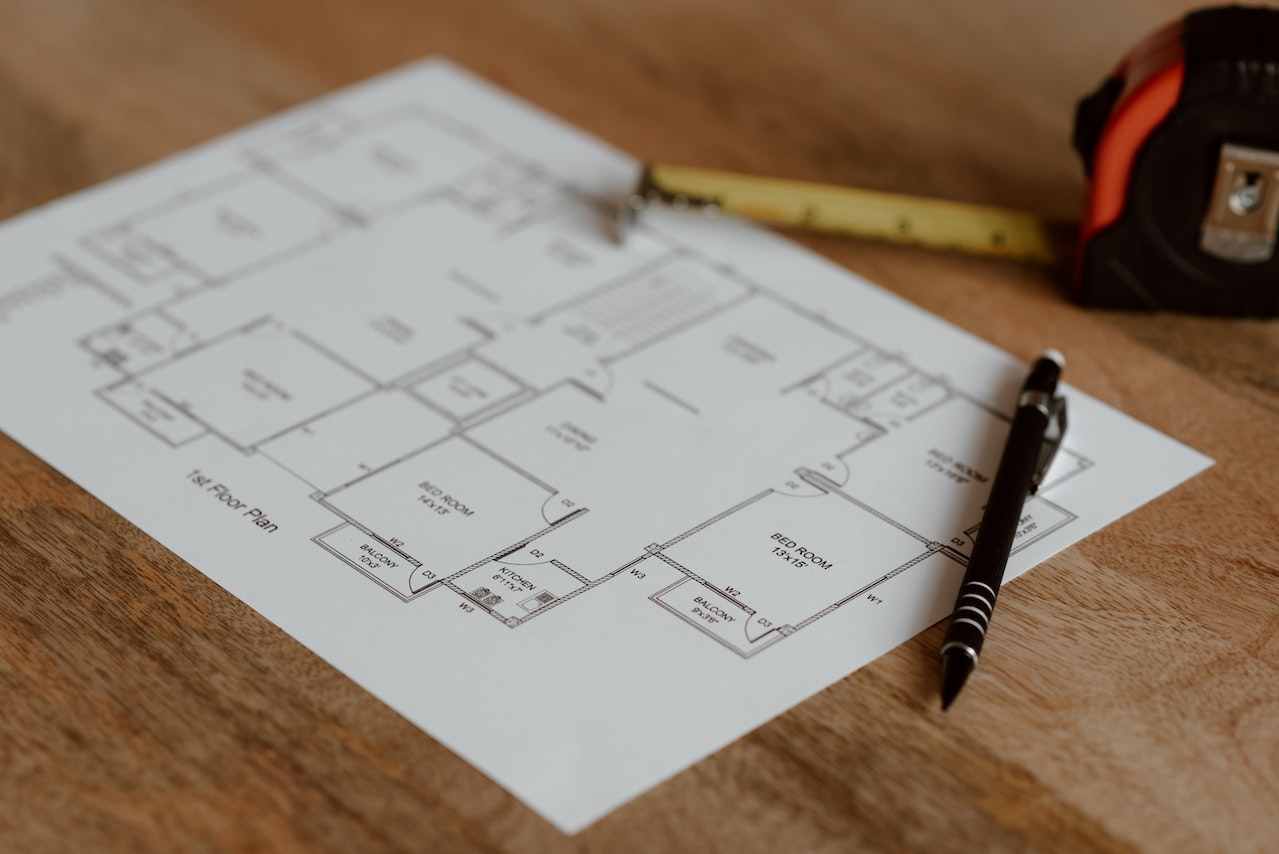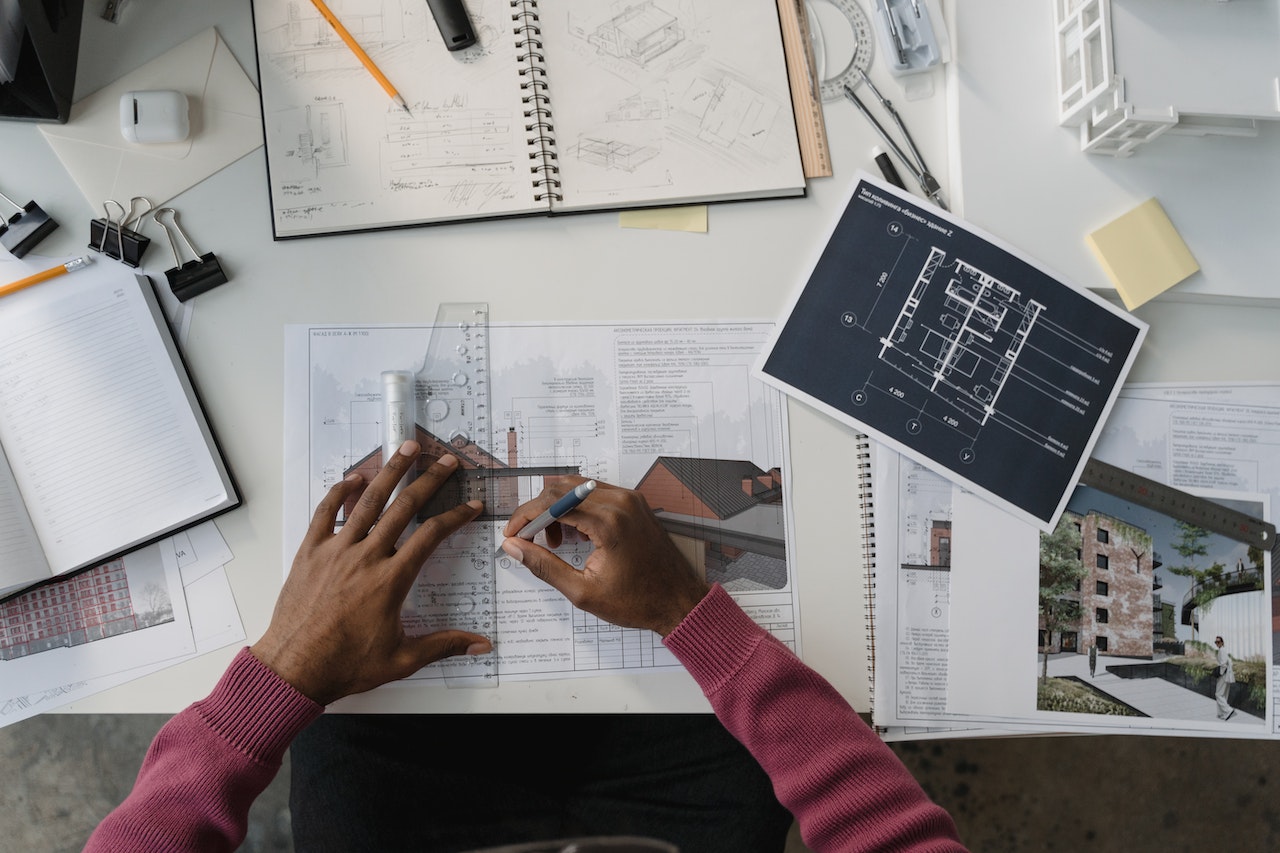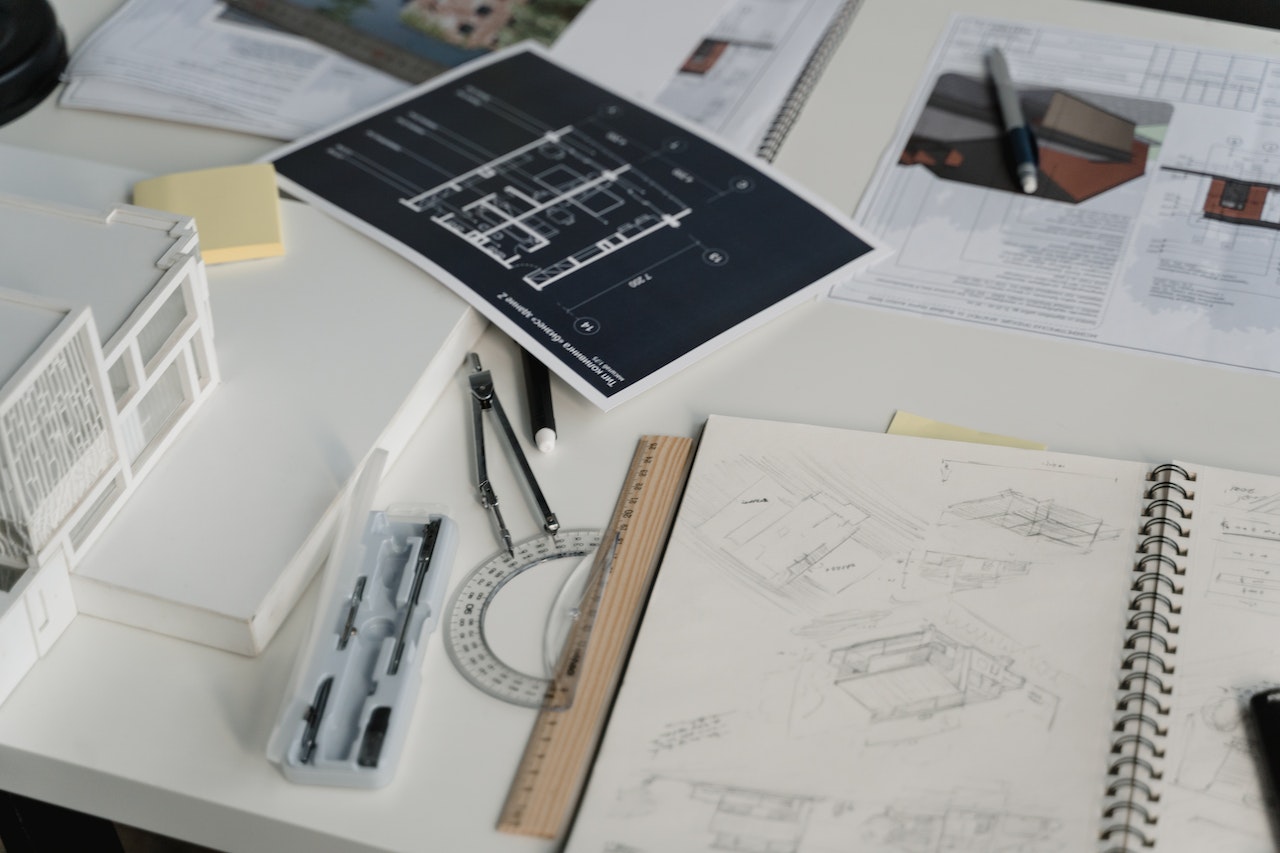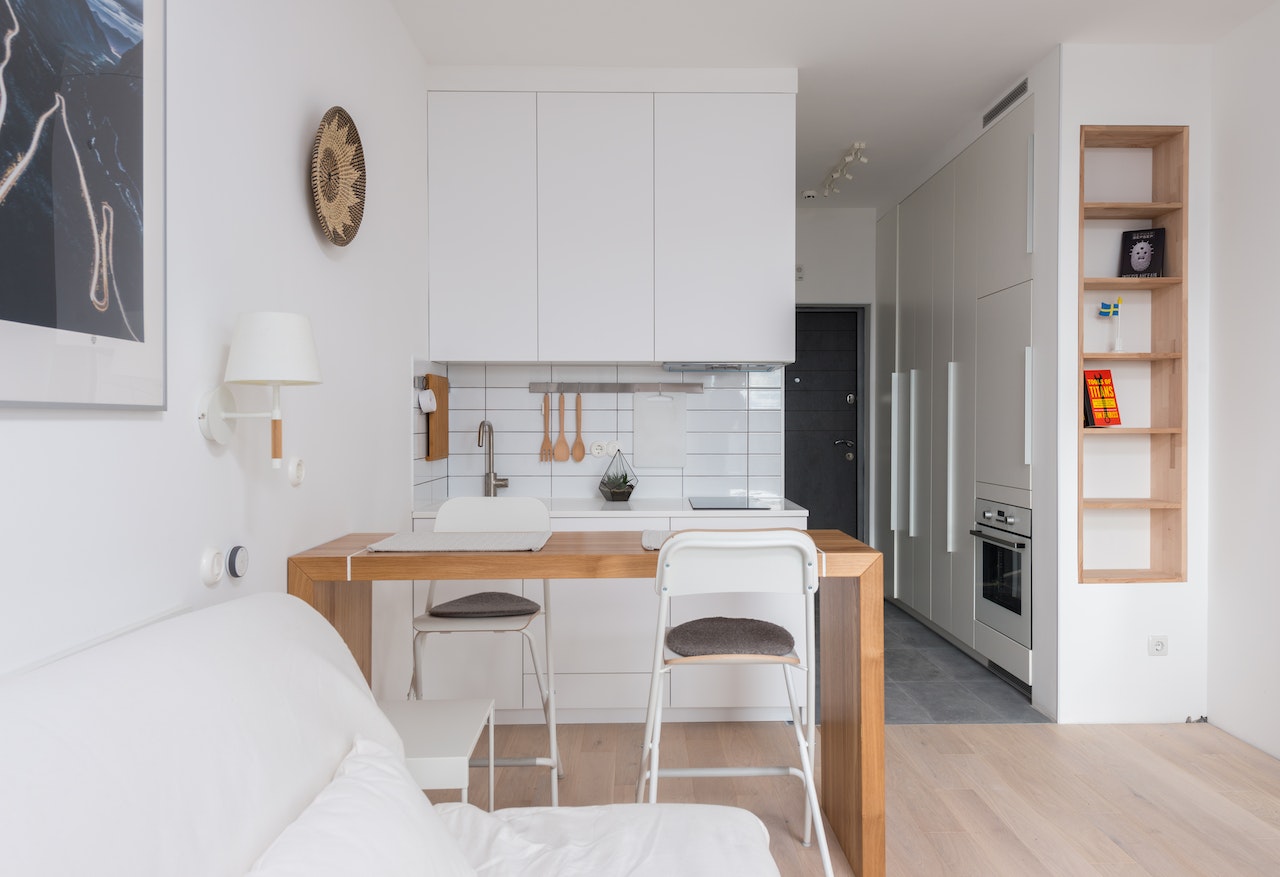
When it comes to the realms of design and aesthetics, two fields often stand out architecture and interior designdifference. These disciplines shape the spaces we live in, work in, and interact with on a daily basis.
Building design is referred to as architecture. On the other side, interior design is the process of designing a building's interior. The interior consists of fixtures, furniture, and other extras that help to give the room the desired appearance and enhance its functionality.
While they share a common thread of creating functional and visually appealing spaces, they differ significantly in their focus, scope, and approach. This article, delves into the nuances of architecture and interior design, highlighting their differences and the critical roles they play in shaping our built environment.
Architecture - Building The Foundations Of Design
One can come across several design theories and a range of fundamentals or principles of design in architecture in this current day where information is just a mouse click away. Different sources, businesses, and even individual designers will have different philosophies, guiding concepts, and design basics.
Scale, color, form, pattern, hierarchy, texture, order, and balance are just a few of the design fundamentals available. It is only natural to wonder "Why are there so many?" as well as "Which ones should I use for my project?"
There is a logical explanation even though there is no easy solution - To produce ideas, designers require a broad range of criteria. Expanding one's options increases a creative mind's capacity and creativity level. It would be like giving a kid a 64-pack of crayons rather than an 8-pack. It vastly expands the design possibilities, frees up creativity, and ultimately makes the process more fun. Like there isn't just one "right way" to color a picture in a coloring book, there isn't always one design approach that works for everyone.
Architectural Innovation - Pushing Boundaries
Architects are akin to artists with a vast canvas. They shape the physical environment we inhabit, and their creations span the spectrum from the functional to the fantastical. From the majestic cathedrals of Europe to cutting-edge skyscrapers piercing the sky, architects have always pushed the boundaries of what is possible. Innovation is at the heart of architecture, with architects constantly experimenting with new materials, construction techniques, and design philosophies.
In the 21st century, architects are not just responsible for creating visually stunning buildings; they are also at the forefront of sustainability efforts. Sustainable design has become a crucial aspect of modern architecture.
Architects strive to create buildings that are environmentally friendly, energy-efficient, and responsive to the needs of our planet. Concepts such as passive design, green roofs, and renewable energy integration have become integral to architectural innovation.
Architectural Process - From Concept To Reality
The architectural journey begins with a vision. Architects work closely with clients to understand their desires and requirements. From this initial concept, they transform ideas into detailed blueprints. These blueprints are not mere drawings but intricate documents that guide every aspect of construction, from the placement of structural beams to the selection of materials.
Architects are master collaborators. They liaise with structural engineers, interior designers, landscape architects, and a host of other professionals to ensure that their vision is executed flawlessly. The coordination involved in a large-scale architectural project is akin to conducting a symphony, with each professional playing a vital role in harmonizing the final result.
Architectural Significance - Shaping Culture And Society
Iconic buildings often transcend their physical form to become symbols of culture and society. They serve as landmarks, attracting tourists, and fostering a sense of identity and pride within communities. Architectural marvels like the Eiffel Tower and the Great Wall of China are not just tourist attractions; they embody the spirit of the regions they inhabit.
Architects understand the symbiotic relationship between functionality and aesthetics. Their designs must not only be visually appealing but also serve a purpose. Whether designing a hospital, a library, or a residence, architects consider how the space will be used and how it can enhance the lives of its occupants.
Architectural Challenges - Balancing Creativity And Practicality
Architects often grapple with budget constraints and resource limitations. Balancing the grandeur of their visions with the realities of available funding can be a daunting challenge. Creativity comes into play as architects seek innovative solutions to deliver exceptional results within the constraints of the project.
In a globalized world, architects must also be culturally sensitive. Designing structures that respect local traditions, aesthetics, and values is essential, especially when working on projects in diverse regions. Architects often delve deep into the cultural fabric of a place to create designs that resonate with the community.
Interior Design - Crafting Livable Spaces
There are two different kinds of environments that interior designers encounter. These are considered to be design spaces for homes and businesses. Single-family homes, condominiums, and apartments are the main focus of residential interior designers. Commercial interior designers are used in public structures like offices, schools, retail stores, community centers, and fitness centers.
Additionally, home interior designers focus more on the specific design preferences of the client they are creating for, whereas commercial facilities are conceptualized around a corporate image.
Another significant difference between these two designers is the experiences they create. Commercial designers take user experience into mind, but home designers focus on creating cozy spaces that are highly personalized for a specific family or person and exude self-expression.
Interior Design Philosophy - The Essence Of Beauty And Function
At the heart of interior design lies a delicate balancing act between aesthetics and functionality. Interior designers are not merely concerned with making spaces look beautiful; they are equally focused on ensuring that they are practical and serve their intended purpose. Every piece of furniture, every color choice, and every lighting fixture is carefully selected to harmonize both form and function.
Interior designers are also mindful of the psychological impact of design. Colors, textures, and layouts can profoundly affect our emotions and behavior. A well-designed living room, for example, can evoke feelings of coziness and relaxation, while a thoughtfully designed workspace can enhance productivity and focus. Interior designers are, in essence, shaping the way we feel within the spaces they craft.
Interior Design Process - From Concept To Realization
The journey of an interior designer begins with a creative vision. This vision is a reflection of the client's desires, preferences, and the designer's own expertise. It encompasses everything from the overall style and theme of the space to the tiniest details like the choice of doorknobs or the arrangement of throw pillows.
Once the vision is crystalized, interior designers dive into detailed planning. They create mood boards, draft floor plans, and select materials that align with the vision. This meticulous planning is essential to ensure that the end result not only meets but exceeds the client's expectations. After the planning phase, comes the execution – the actual transformation of the space.
Interior Design Impact - Elevating Quality Of Life
One of the most significant contributions of interior design is the creation of personalized environments. No two interior design projects are the same because they are tailored to the unique needs and tastes of each client. Whether it's a minimalist apartment, a cozy family home, or a luxurious spa, interior designers bring the client's dreams to life.
Interior designers also excel in enhancing the comfort and functionality of spaces. They meticulously arrange furniture for optimal traffic flow and functionality. Lighting schemes are designed to create ambiance and highlight specific areas. Attention to detail extends to choosing the right fabrics, materials, and finishes that not only look great but are also easy to maintain.
Challenges In Interior Design - Creativity Meets Constraints
Interior designers often work within budget constraints. They must be creative in sourcing materials and furnishings that meet the client's vision while staying within the allotted budget. This financial juggling act is where the artistry of interior design truly shines.
Keeping up with design trends is essential, but interior designers also strive to create timeless spaces. The challenge lies in striking a balance between incorporating trendy elements and ensuring that the design remains relevant and appealing for years to come.
Explanation Of Architecture And Interior Design Differences
Every structure has a hidden narrative within its walls. The two professions combine in unison to make the structure and its interiors practical, enjoyable, and appealing. It is simple to mix up the roles that interior design and architectural features play because they are so closely related. Their primary differences are clear, though.
Let's clarify the misunderstanding by determining their differences. Architects are skilled at overcoming structural issues, and they create imaginatively for both the interior and exterior of buildings. While interior design focuses on aesthetics, interior design emphasizes the utility of a space.
Architects concentrate on interior design, space planning, and design methodologies, and they are skilled at bringing life to uninspiring settings. Before occupants move into the new buildings, the main differences become apparent.
With the goal of housing people, interior architecture focuses on the interiors and their usefulness. In order to complete the development, restoration, and re-adaptations of the interior spaces, interior architecture is a composition of various disciplines, such as the arts and sciences.
Knowledge of interior architecture can make it simple for someone to modify a space to fit a certain function in a built environment. Due to exposure and knowledge gained from working with interior designers, some architects decorate exclusively as interior designers.
Fundamental Difference - Exterior Vs. Interior
At its core, architecture primarily concerns itself with the design, planning, and construction of a building's exteriors. Architects envision and shape the outer structure, determining the building's form, scale, and integration with its environment. They are responsible for ensuring structural integrity, adherence to building codes, and creating an external aesthetic that captures the essence of a project.
On the contrary, interior design revolves around the artistic and functional augmentation of interior spaces. Interior designers delve deep into the intricacies of these spaces, considering elements such as furniture arrangement, lighting, color schemes, materials, and textures. Their expertise lies in enhancing the internal environment, making it not only visually appealing but also conducive to the activities and emotions it aims to evoke.
Education And Expertise - Varied Pathways
Architects typically follow a rigorous educational and professional path. They undergo formal training, often earning a Bachelor's or Master's degree in architecture, and then complete a licensure process. This comprehensive training equips them with a deep understanding of structural engineering, construction techniques, and architectural theory, allowing them to oversee the entire building process.
In contrast, interior designers have more varied educational and certification pathways. While formal education in interior design is beneficial, it is not always a strict requirement. Certification in interior design is often optional and can be obtained through various organizations and programs. Consequently, the field attracts professionals with diverse backgrounds and experiences.
Collaborative Dynamics - Interactions And Interfaces
Architects are renowned for their extensive collaboration with various professionals in the construction industry. They engage with structural engineers, contractors, landscape architects, and urban planners to ensure that their architectural vision aligns with the overall project goals and functions harmoniously within its context.
Interior designers, while collaborating with architects and other construction experts, focus their efforts on the intricate details that shape the interior environment. They partner with furniture manufacturers, artisans, lighting specialists, and textile suppliers to curate every aspect of the interior, ensuring cohesion, functionality, and aesthetics.
Project Phases And Timelines - Complexity Vs. Precision
Architectural projects often span multiple phases, including conceptualization, schematic design, design development, construction documentation, and construction administration. These phases are comprehensive and may extend over several years for large-scale projects.
Conversely, interior design projects typically involve fewer phases and shorter timelines. The precision and efficiency required to transform interior spaces are distinctive to the discipline, allowing interior designers to bring their visions to fruition within comparatively shorter timeframes.
Regulatory And Ethical Responsibilities - Varied Commitments
Architects bear substantial legal and ethical responsibilities. They must ensure that their designs comply with building codes, zoning regulations, safety standards, and accessibility requirements. Additionally, architects carry liability for the structural soundness and safety of the buildings they design.
While interior designers also need to consider safety and accessibility, their legal and ethical responsibilities differ. They have a more specialized focus on the interiors of a building, and their liability extends primarily to the design and functionality of those spaces.
The Symbiotic Relationship Of Architecture And Interior Design
The disciplines of architecture and interior design, while distinct in their roles and responsibilities, share an intricate and symbiotic relationship in the world of design.
Architectural Framework - The Canvas For Interior Design
Architecture lays the foundation upon which interior design builds its narrative. The architectural framework serves as the canvas upon which interior designers layer their creativity and expertise. Architects set the stage with the building's form, structure, and layout, creating the spatial framework within which interior designers can work their magic.
Architects' decisions about the building's size, shape, and layout directly influence the possibilities and constraints that interior designers must consider. These architectural choices can dictate the flow of spaces, the placement of windows, and even the availability of natural light - all of which profoundly impact the interior design process.
Interior Design - Elevating Architectural Spaces
Interior designers step into the architectural space and imbue it with life, functionality, and aesthetics. They optimize the use of space, carefully selecting furniture, lighting, materials, and colors to create an interior that not only complements the architecture but also meets the needs and desires of the occupants.
One of the key aspects of the symbiotic relationship is achieving a cohesive integration between architecture and interior design. The interior should seamlessly align with the external appearance and purpose of the building. A well-executed interior design enhances the overall architectural concept, creating a unified and harmonious experience.
Aesthetic Unity - Designing For Visual Continuity
Maintaining a consistent design language is essential for a successful collaboration between architects and interior designers. Shared design principles, materials, and color palettes ensure that the interior and exterior spaces communicate effectively. This consistency reinforces the identity of the space and enhances the overall user experience.
Materials play a significant role in achieving aesthetic unity. Architects and interior designers often collaborate closely on material selection, ensuring that the materials used for finishes, flooring, and furnishings align with the design vision for both the interior and exterior of the building.
Functional Harmony - Balancing Form And Purpose
Interior designers are experts in optimizing the functionality of a space. They work hand-in-hand with architects to ensure that the interior layout aligns with the intended functions of the building. This collaborative effort results in spaces that are not only visually appealing but also highly functional.
Architects and interior designers collaborate to create efficient spatial flow and circulation within the building. This involves considering how people move through the space, the placement of doors and openings, and the accessibility of various areas. Achieving a harmonious flow contributes to the overall user experience.
Sustainability And Wellness - A Shared Commitment
Both architecture and interior design increasingly prioritize sustainability. Architects design energy-efficient building envelopes and incorporate sustainable building materials, while interior designers select eco-friendly finishes and furnishings. This shared commitment to environmental responsibility benefits both the interior and exterior of the building.
Another common thread is a focus on human-centric design. Architects and interior designers work together to create spaces that promote well-being, comfort, and health. This includes considerations such as natural lighting, air quality, acoustics, and ergonomic furniture - factors that impact both the interior and exterior environments.
FAQs
How Does The Education Path For Interior Designers Differ From That Of Architects?
Interior designers often have more varied educational pathways, while architects typically follow a rigorous path that includes formal degrees and licensure.
What Is A Key Challenge That Interior Designers Face When Working On Projects With Architects?
Balancing their creative vision with the architectural constraints and opportunities of the space is a common challenge for interior designers.
How Do Architects Contribute To The Interior Design Process?
Architects provide the foundational structure and layout, serving as the canvas upon which interior designers layer their creativity and functionality.
What Is One Of The Primary Responsibilities That Sets Architects Apart From Interior Designers?
Architects carry a higher level of legal and ethical responsibility, ensuring compliance with building codes, safety standards, and structural integrity.
How Do Interior Designers Contribute To The Sustainability Of A Building?
Interior designers often select eco-friendly finishes and furnishings, aligning with the broader sustainability goals set by architects for the building as a whole.
Conclusion
The exploration, architecture and interior design differences have shed light on the distinct yet interdependent realms of design and construction. These two disciplines, with their unique educational paths, responsibilities, and collaborative dynamics, contribute to the rich tapestry of our built environment.
However, it's their harmonious synergy that truly defines the spaces we inhabit. Understanding these disparities enhances our appreciation of the multifaceted world of architectural and interior design differences and underscores their pivotal roles in shaping the places we call home, work, and explore.


